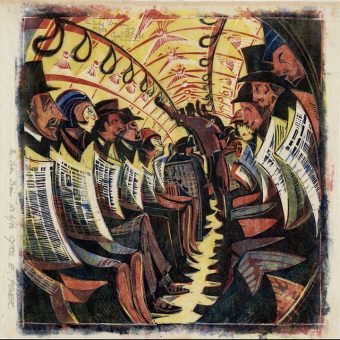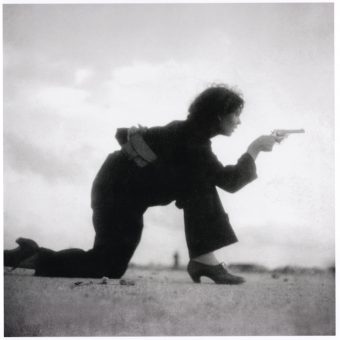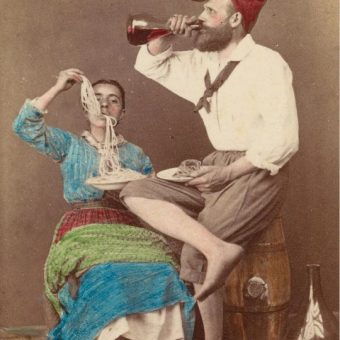These images from Centifrons Idolum Iani Hoc est: Metoposcopia Seu Prosopomantia by Johannes Praetorius (1661) attempt to convey the importance forehead topography plays in knowing another’s character. The study of foreheads is known as Metoposcopy, a pseudo-science developed in the 16th century by the Italian Renaissance mathematician, Gerolamo Cardano (Jerome Cardan). He published a treatise on the subject in 1658.
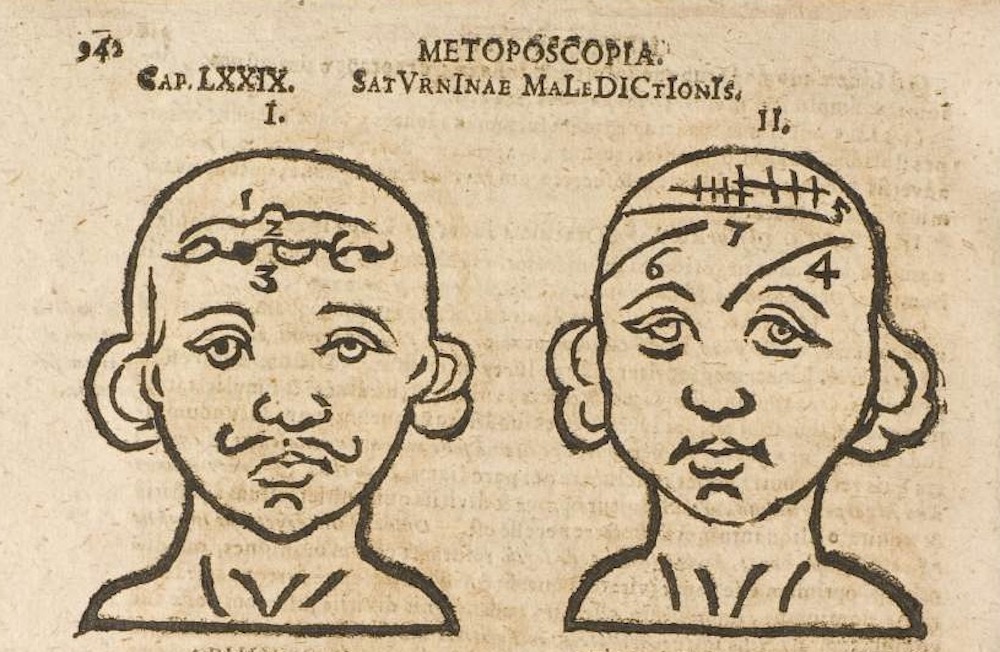
The book teaches us how to read character is patterns of forehead wrinkles. And when paired with astrological interpretations, a clairvoyant can make accurate predictions about the person’s destiny. The work is a forerunner to physiognomy and phrenology. Praetorius later wrote about chiromancy or palm reading.
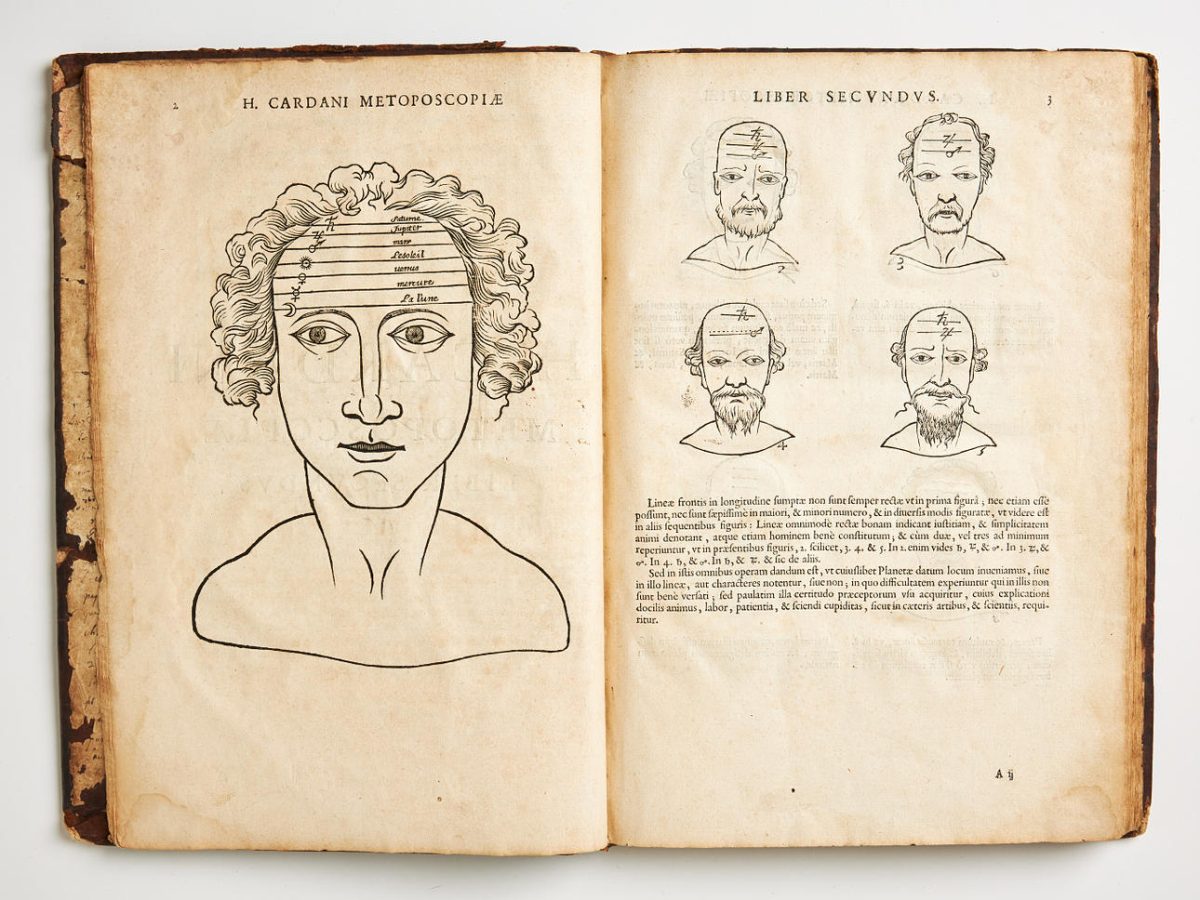
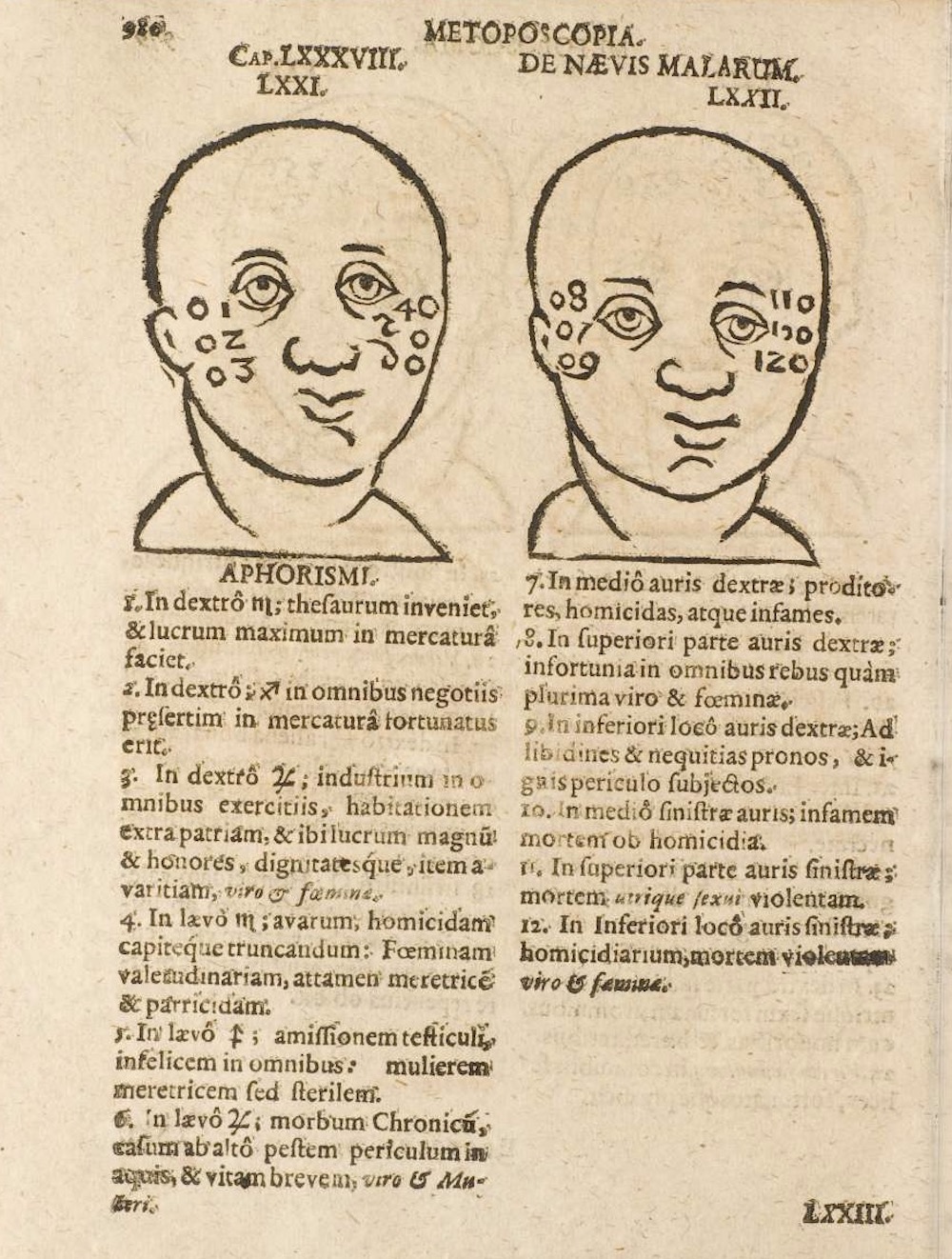
Like astrology, the practice was based on the belief that humans, the earth, and the cosmos are connected. The conjunction of the planets influenced our moods and fates – and a person’s appearance gave clues to character. For example, a wart in the line of Mars identified a cruel and bloody person; a broken line meant you would be wounded by a sword; wavy lines indicated death by drowning.
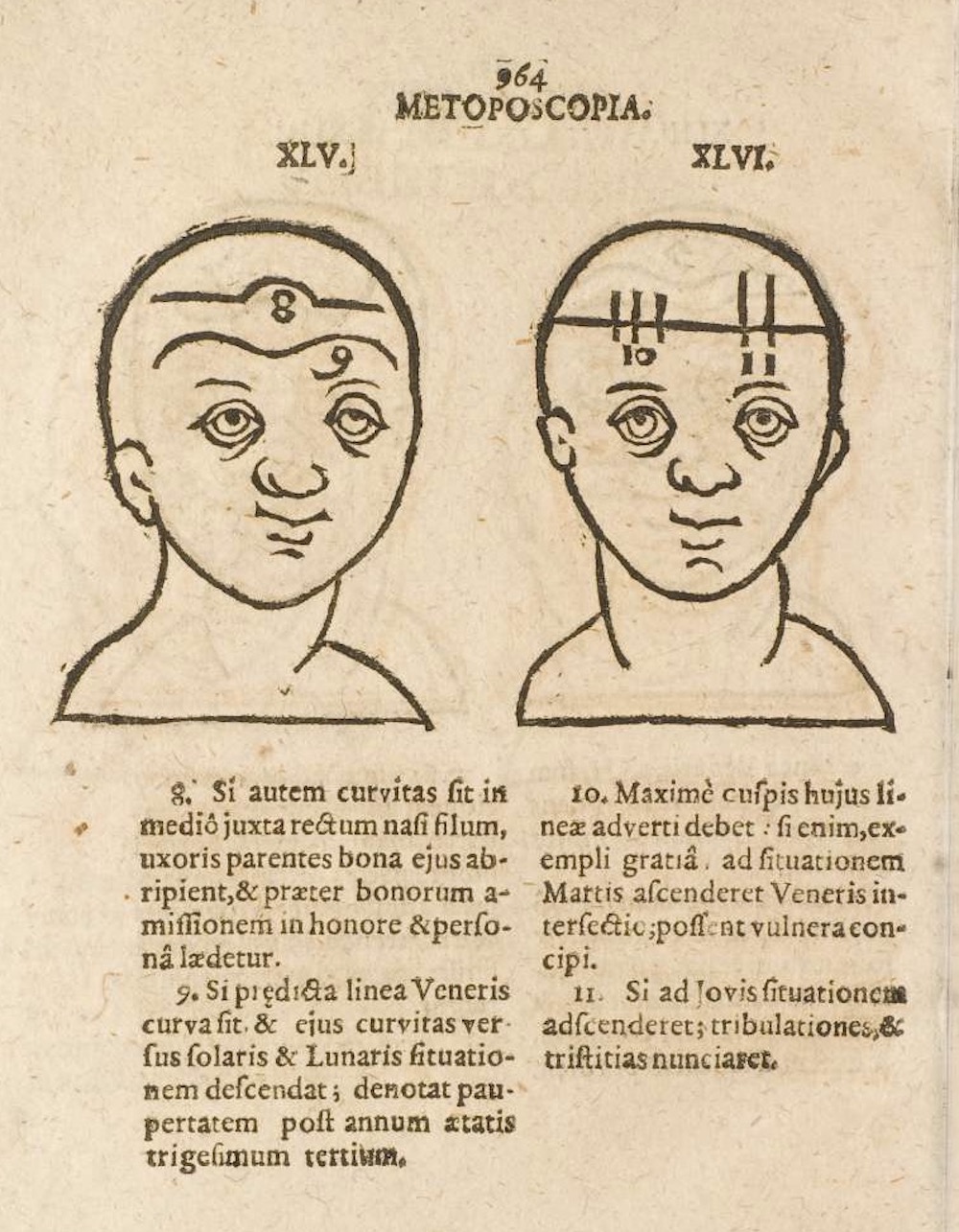
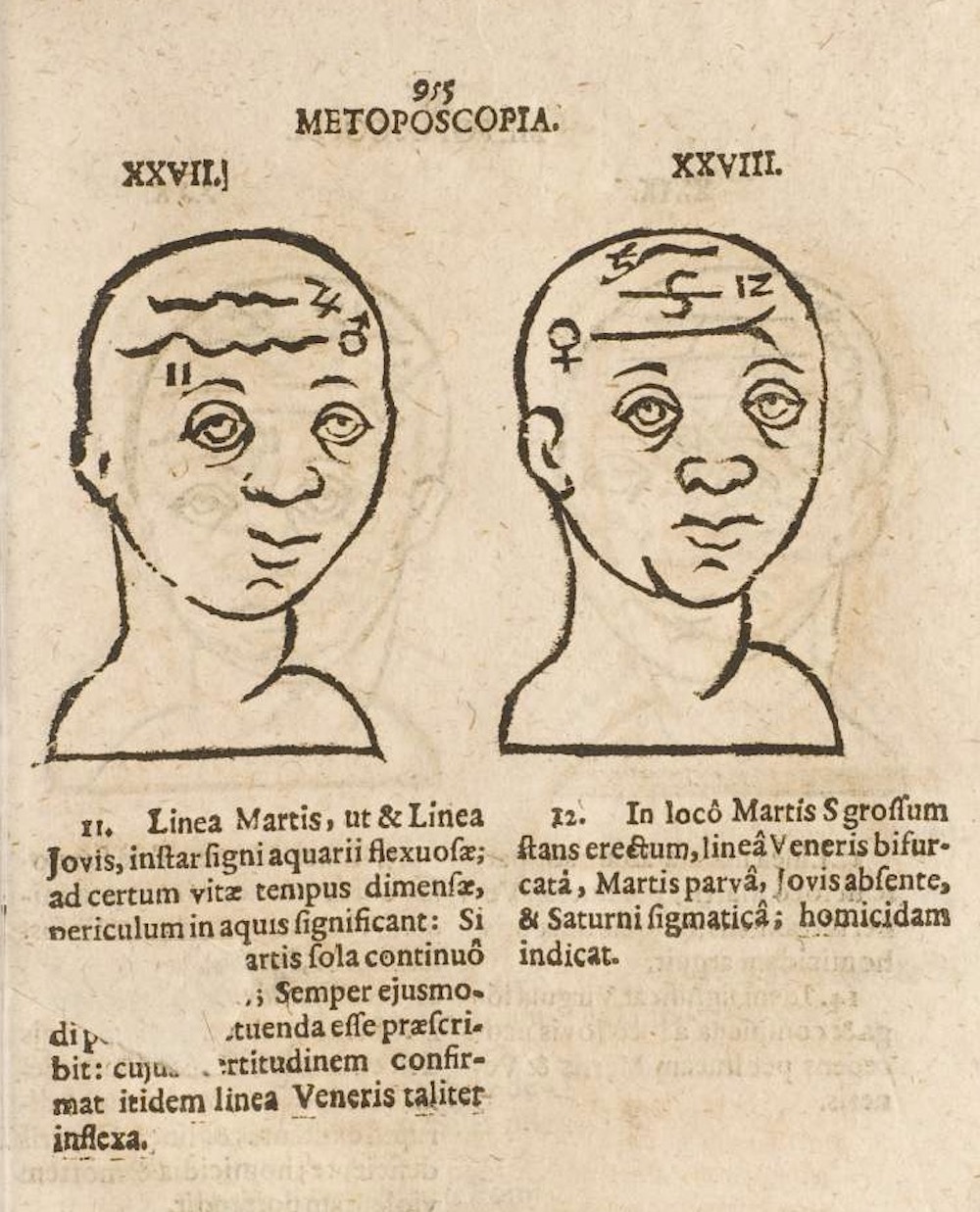
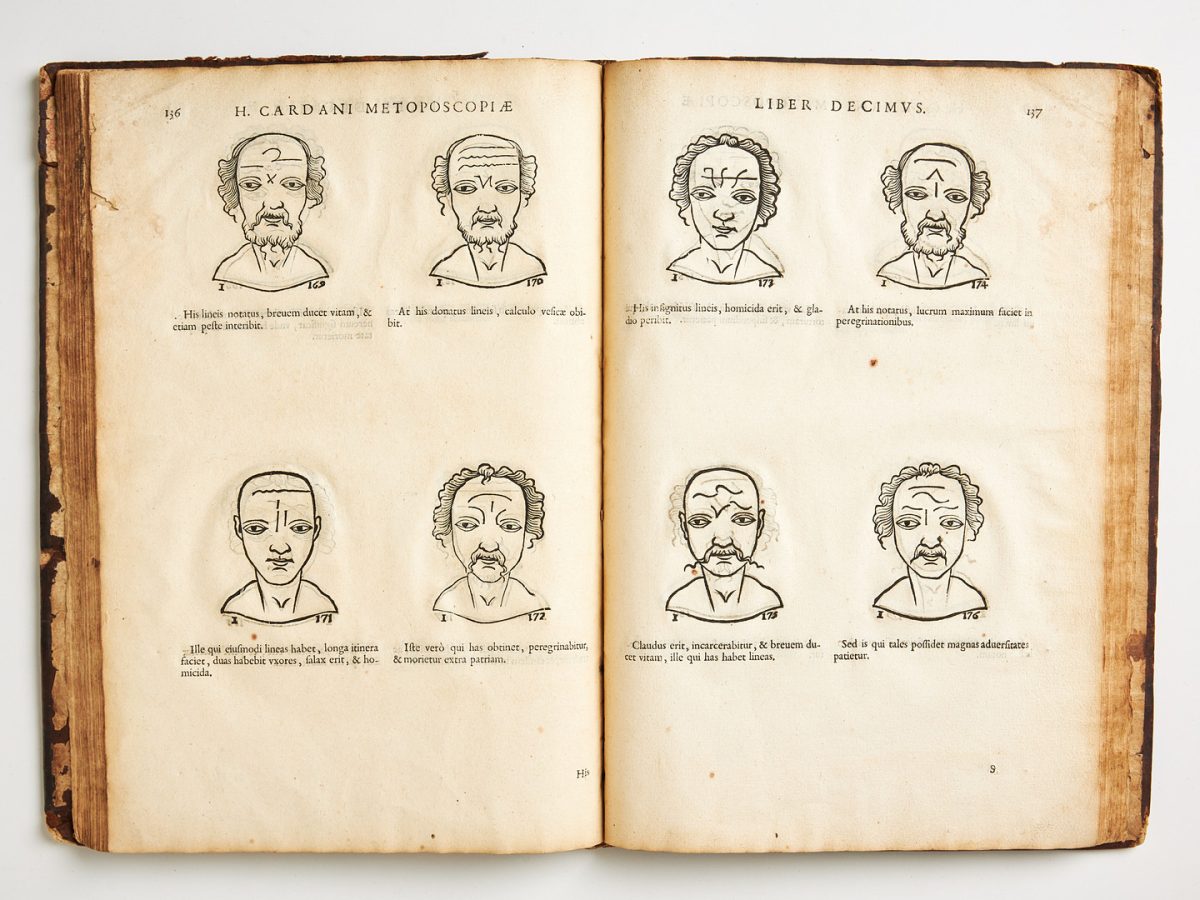
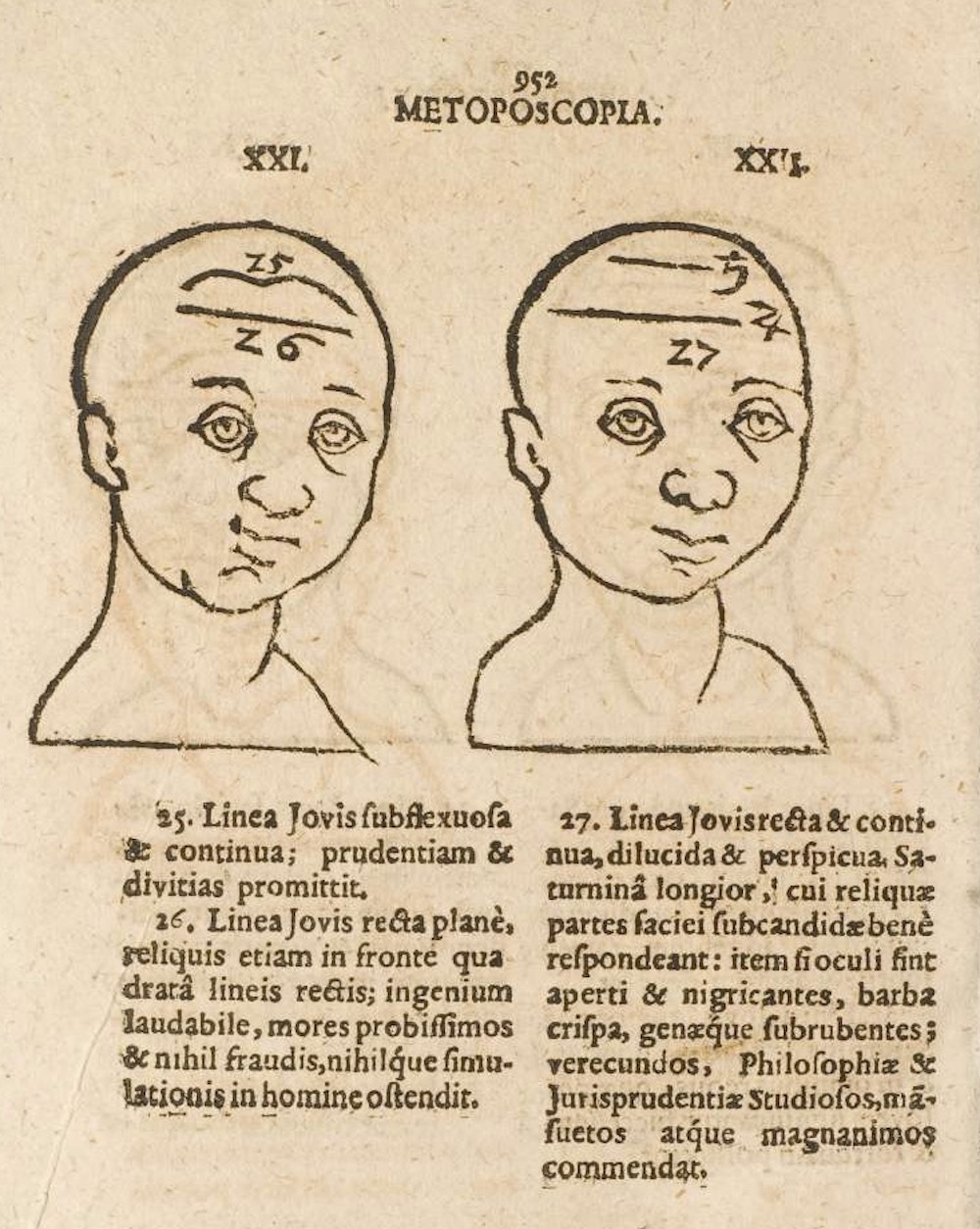
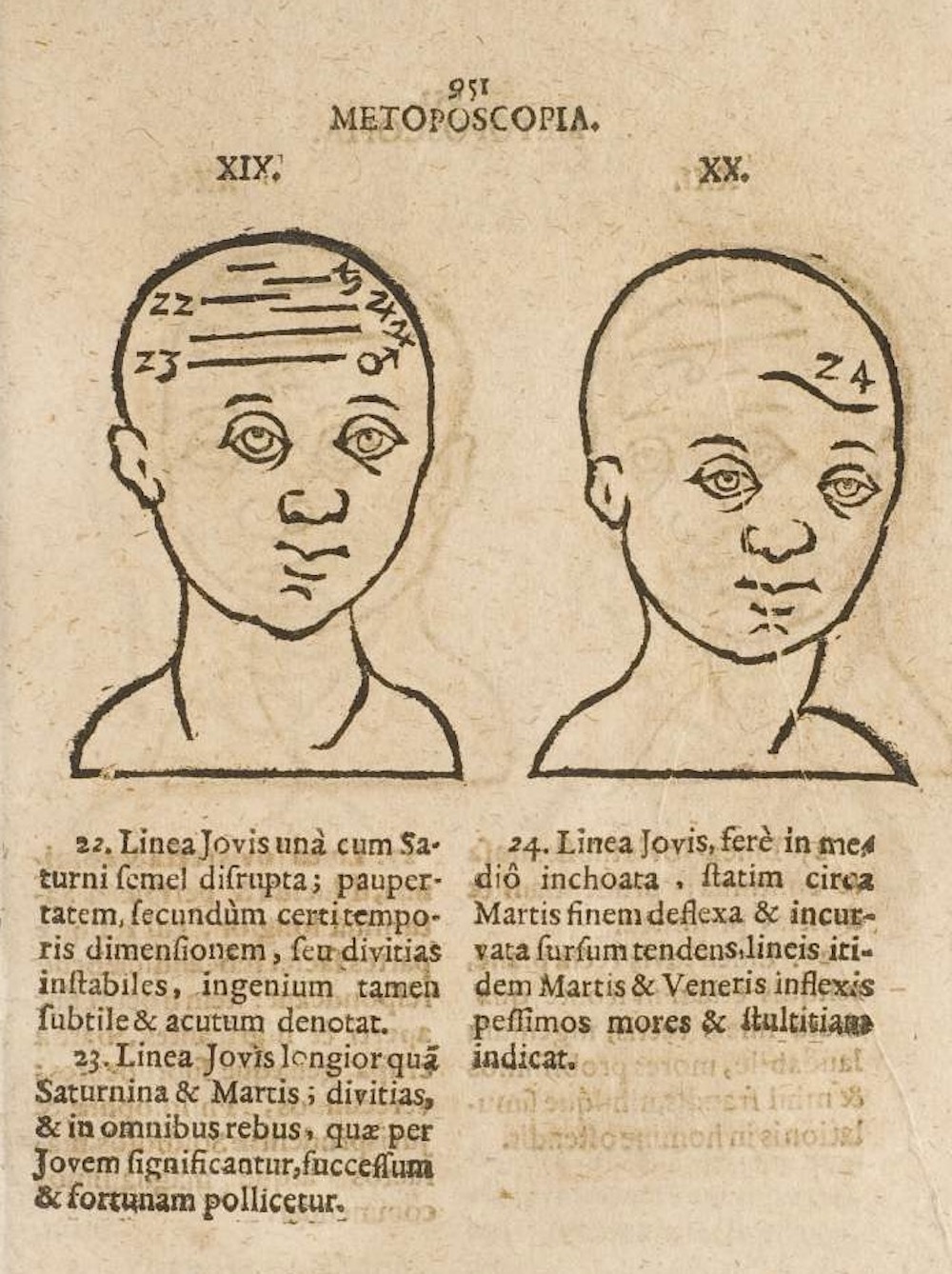
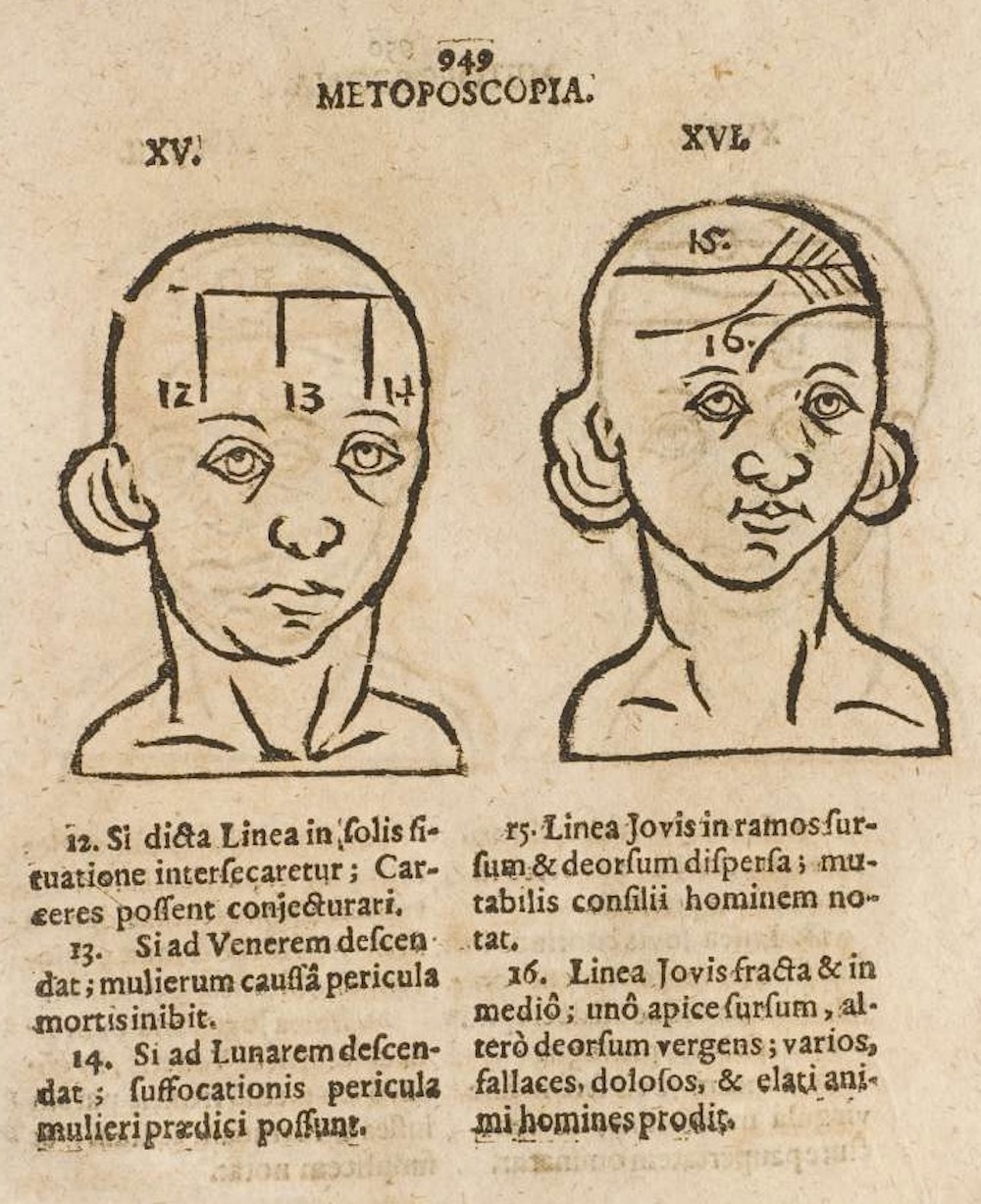
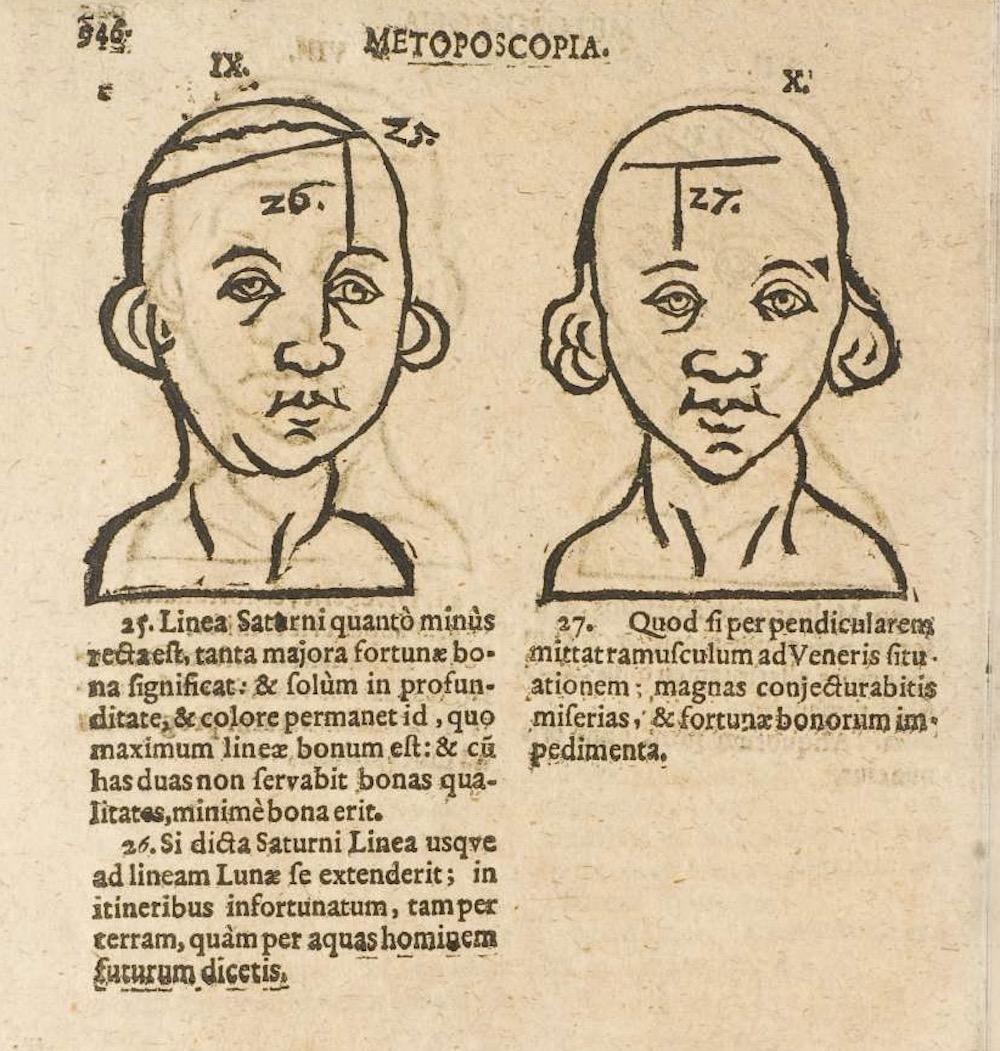
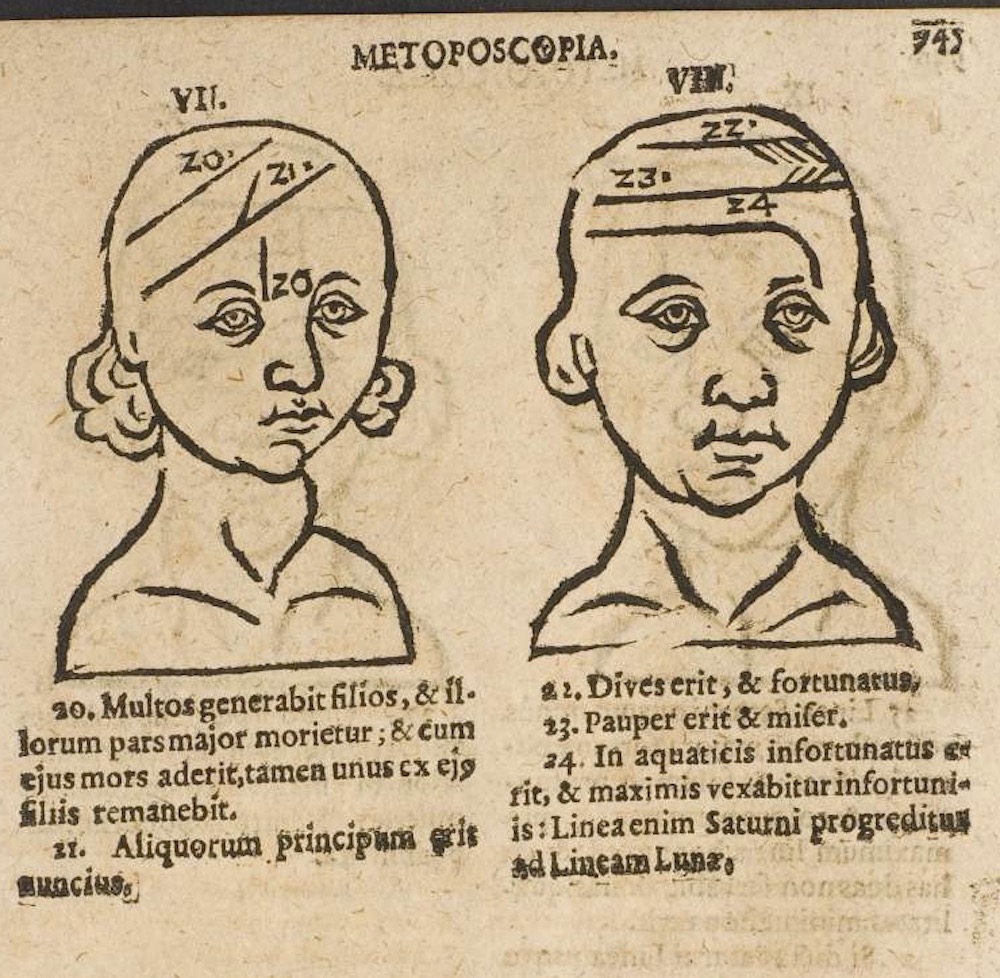
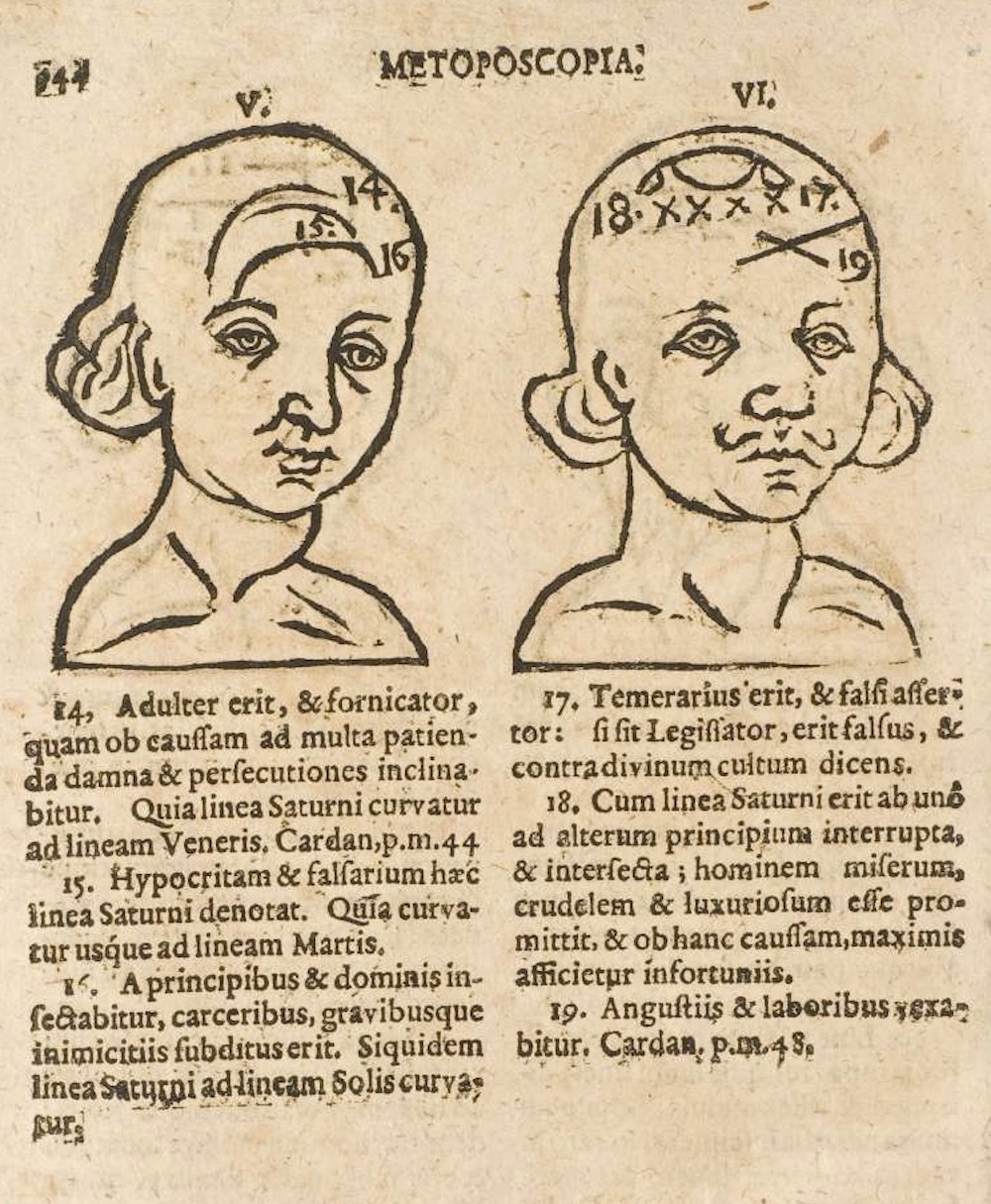
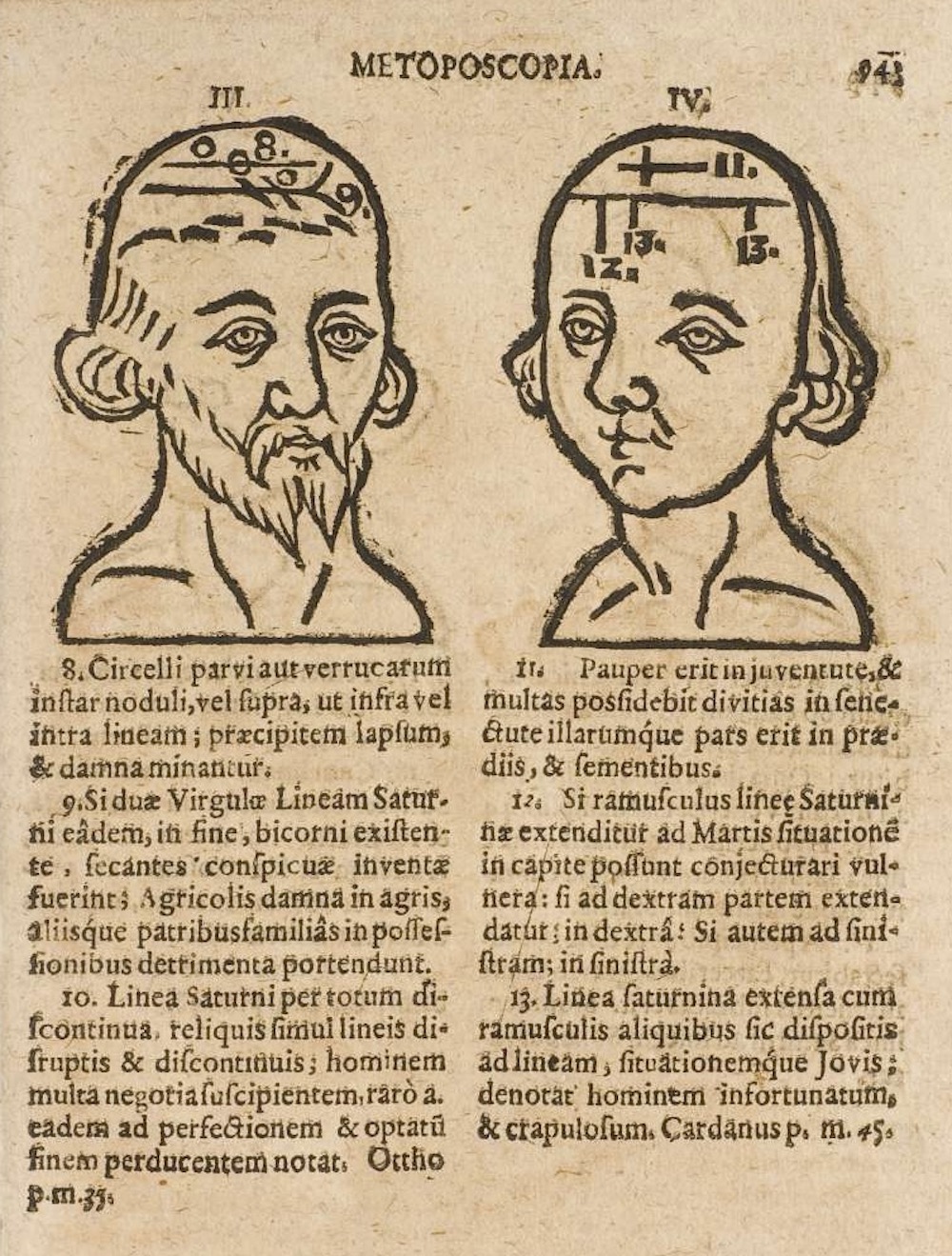

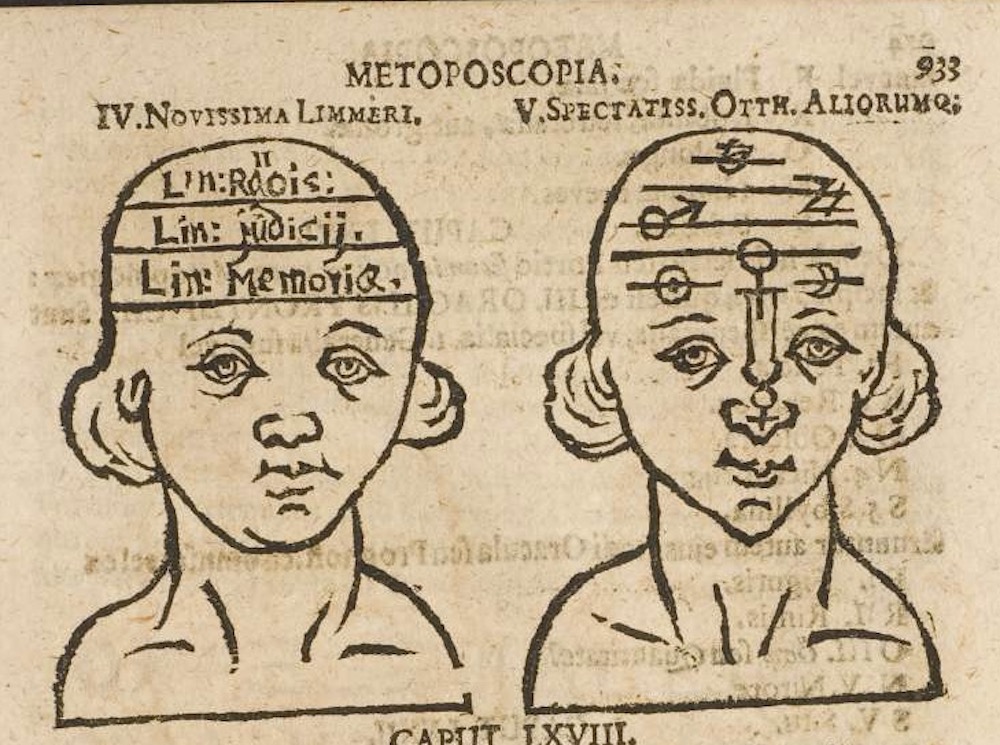
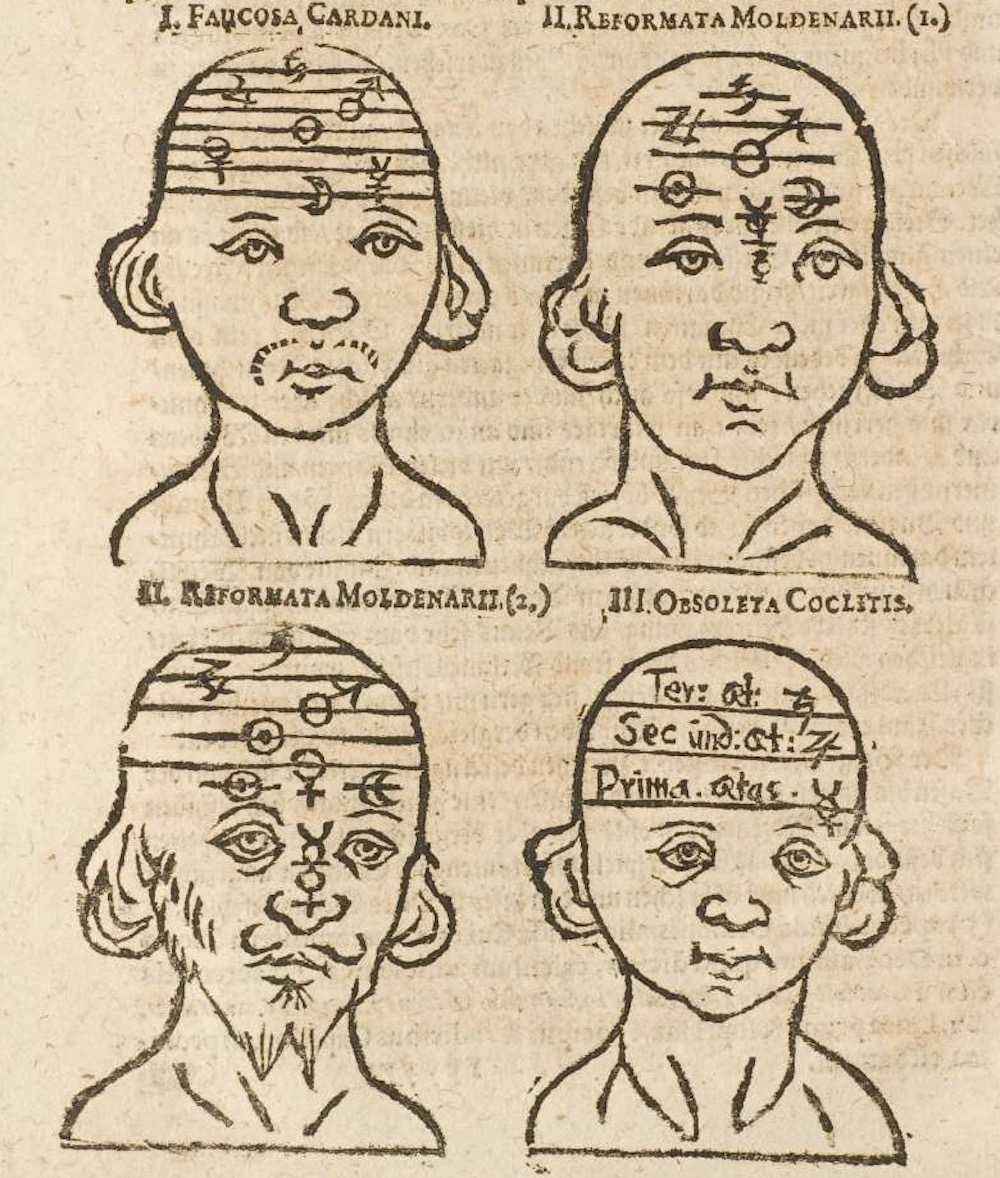
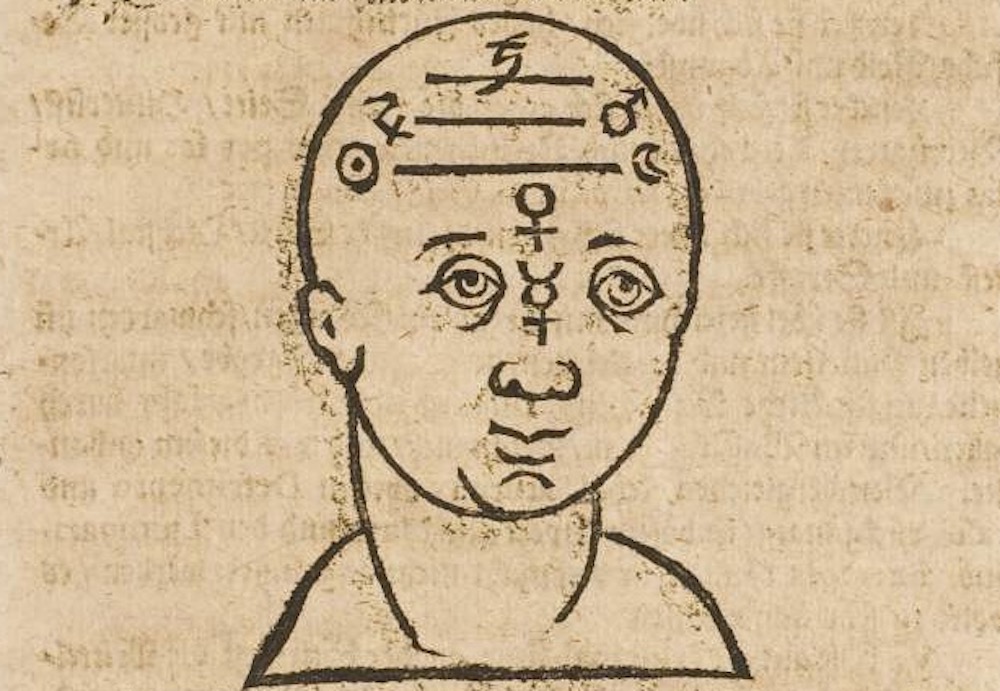
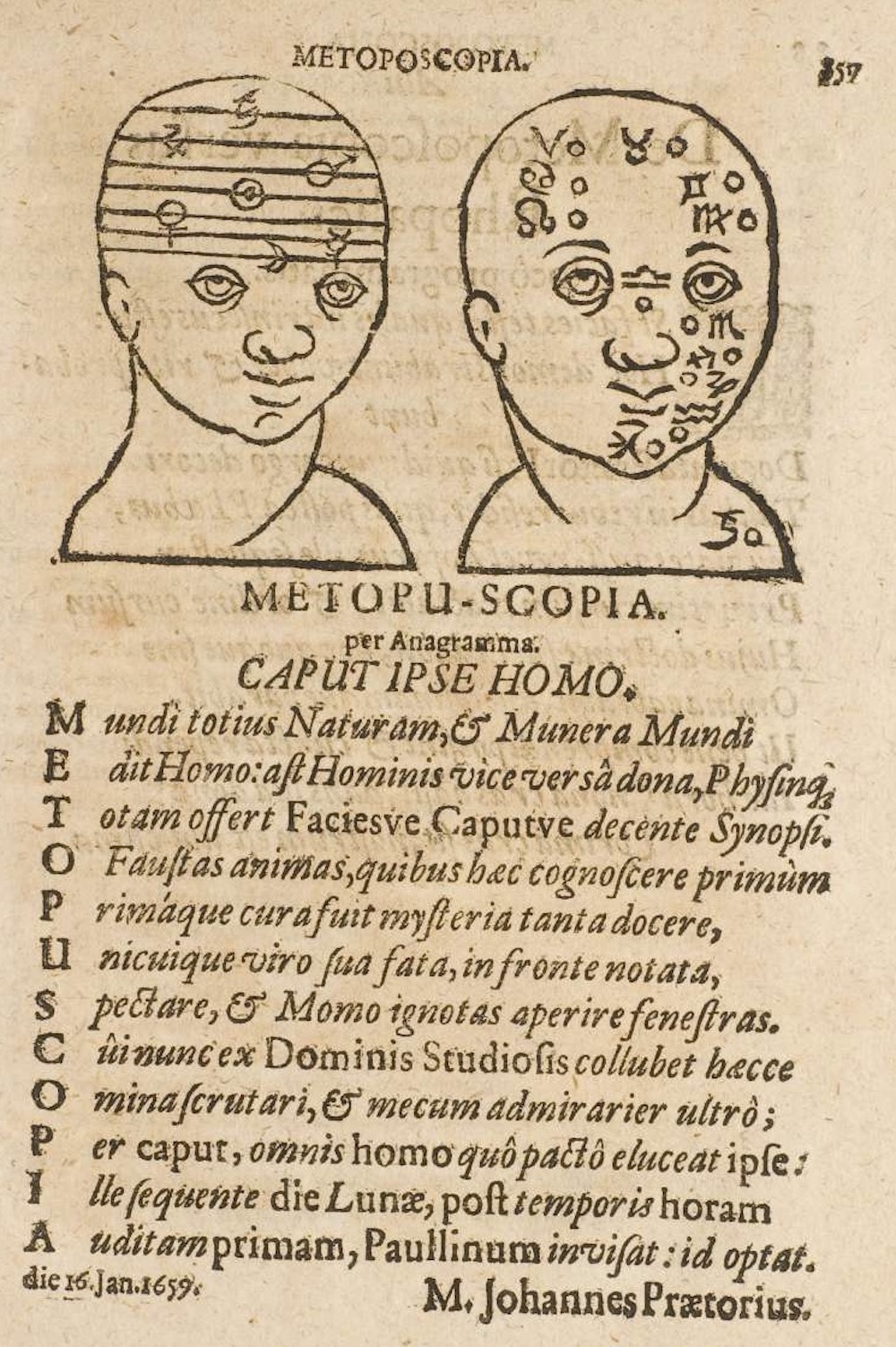
Pages from ‘Vaught’s Practical Character Reader’ (1902)
Brain Maps: Illustrations From Dr Alesha Sivartha’s Book of Life (1898)
Via: Wolfenbuettel Digital Library
Would you like to support Flashbak?
Please consider making a donation to our site. We don't want to rely on ads to bring you the best of visual culture. You can also support us by signing up to our Mailing List. And you can also follow us on Facebook, Instagram and Twitter. For great art and culture delivered to your door, visit our shop.





